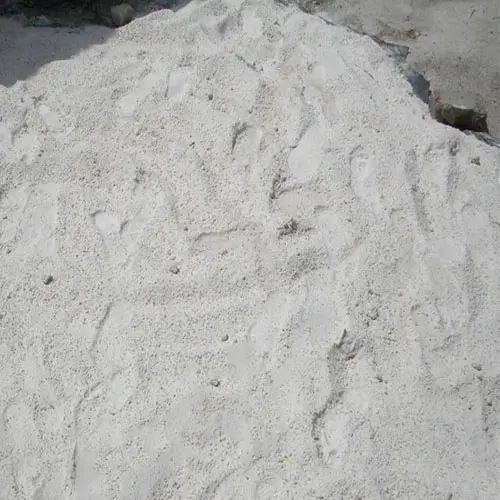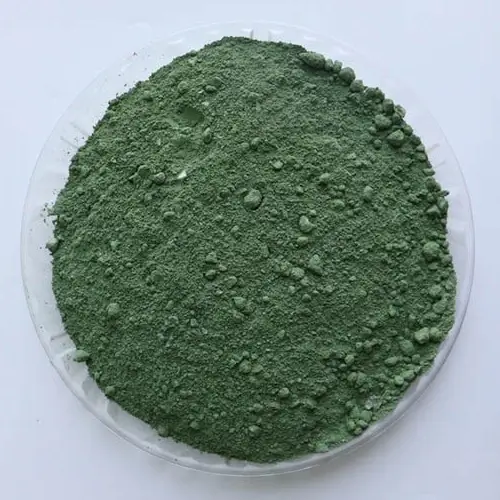Refractory raw materials refer to a product made of a variety of high-temperature resistant materials under specific process conditions. During use, refractory materials will be affected by various external conditions alone or in combination. Therefore, a variety of refractory materials with different properties are required to meet specific use conditions. The types and properties of the refractory raw materials used are different.
There are usually two ways to classify refractory materials:
The first is the chemical properties. According to the chemical properties, it can be divided into acid, alkaline, and neutral. Acidic refractory materials made of silicon dioxide are easy to react with other alkaline substances in high temperature environments, such as alkaline refractory materials, alkali solutions, etc.
Alkaline refractory materials, which are mainly based on magnesium oxide and calcium oxide, are easy to react with other acidic materials at high temperatures, such as acid solutions, acidic refractory materials, etc. By comparison, neutral refractory materials can remain stable in high temperature environments and rarely react with other substances.

Second, the production method. Refractory materials are generally produced by machine pressing, manual, melting and casting, etc. These materials have their own advantages after processing and production, and are suitable for different working environments. Supply type. At present, materials can be divided into shaped and amorphous according to their form. Shaped refractory materials generally have a fixed appearance and volume, and do not change with factors such as use time and working temperature environment. Amorphous refractory materials are usually a mixture of coarse aggregates, fine particles, etc., and their overall performance is unstable and has strong plasticity. In order to make the product achieve specific performance, those who participate in production can use a certain amount of organic matter, metals, etc., and increase fiber materials to achieve the expected performance.
Refractory Applications:
1.Process damage mechanism
This failure mechanism can be divided into four types: First, internal stress. During use, due to temperature changes, refractory materials will produce great internal stress. This stress is irreversible in the destruction of brickwork, and common consequences are deformation and cracking. Second, melting. Careless operation causes the working environment temperature to rise, and local materials will soften due to high temperature. When the temperature is too high, molten droplets may even occur, causing the blocks to fall. Vapor deposition. When preparing alkaline refractory materials, some metals are deposited in the pores and masonry of the materials after decomposition and oxidation. Fourth, external forces. Objects in the kiln often collide and hit during movement. These external forces will cause the refractory materials on the inner wall of the kiln to gradually fail after wear.
2.Principles of refractory application
In order to ensure that refractory materials can better play their role in use, it is necessary to formulate structural design and use requirements in advance, be familiar with the working characteristics of each link, and record the temperature changes in each working stage. In addition, different refractory materials have different properties and their application range is also very limited. Therefore, when choosing suitable materials, materials should be selected according to needs and the best choice should be made based on the advantages and disadvantages of the materials. In addition, when using a large number of refractory materials, they should also be selected based on their economic and expected costs, and reasonable arrangements should be made considering the costs of transportation and storage.
3.Practical Application of Refractory Materials
Due to its excellent corrosion resistance and high temperature resistance, it is widely used in industry, scientific research, national defense and other industries, and also performs well in the field of steel metallurgy. For example, refractory materials can reduce operational risks, improve the quality and output of steel products, and effectively improve production efficiency. In addition, refractory materials also have an important position in other metal smelting fields, and have made important contributions to aluminum, copper, lead and other metal industries.
With the promotion of green production methods in my country, refractory materials have also highlighted the advantages of resource conservation and green environmental protection in production. Although there are still problems such as unstable quality, low efficiency, few new products, and short life at this stage, this does not affect the production status of refractory materials. Now, the raw materials, quality, variety and materials of domestic refractory materials have been improved one by one. After the joint efforts of industry professionals, they will definitely occupy a pivotal position in the national production.
4.What are refractory minerals used for?
Acid Refractory Minerals. These refractories are used in open-hearth furnaces, gas retorts, coke ovens, copper furnaces, and glass furnaces. Sand molds (as thermal insulators), porcelains, and earthenwares also contain quartz. Fused silica is used in a variety of applications, such as lamps, tubing, and jackets.
5.What is a refractory material?
In materials science, a refractory (or refractory material) is a material that is resistant to decomposition by heat or chemical attack and that retains its strength and rigidity at high temperatures.

